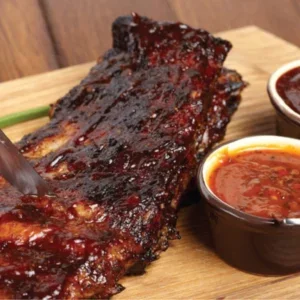
Smoke flavourings are used more widely in foods than one might think. In meat, fish and cheese, they have frequently been used as alternatives to traditional smoking processes. They have also been key determinants of the taste of many snack foods, sauces and soups, as well as finding their way into confectionery, drinks and edible ices. Now, their days are numbered.
As of January 2025, food producers have had to start looking at replacements for eight commonly used smoke flavourings – proFagus Smoke R714 (SF-001), Zesti Smoke Code 10 (SF-002), Smoke Concentrate 809045 (SF-003), Scansmoke (SF- 004), SmokEz C-10 (SF-005), SmokEz Enviro-23 (SF-006), proFagus Smoke R709 (SF-008) and Fumokomp (SF-009).
These products have been available in the EU for ten years, and a renewal for their authorisation had been requested for a further ten years, but a review by the European Food Safety Authority (EFSA) was instigated by the European Commission in order to examine the chemical characterisation, genotoxicity and dietary exposure of each product, and the outcomes in 2023 led to a major rethink.
“The Commission’s key priority is the health of its citizens,” a source at the Commission told Ingredients Insight. “A thorough scientific assessment of the safety of what we eat, therefore, lies at the heart of the EU’s food safety rules. As a result of their mandatory renewal process and on the basis of the corresponding EFSA opinions, in April 2024 a large majority of member states supported the Commission’s proposals not to renew the EU authorisations of the eight smoke flavourings currently on the market.”

A hazard to health
Looking back, the ban did not come as a surprise. Back in April 2021, the Commission proposed a ban on the use of certain smoke-flavouring primary products in food and beverages. At the end of 2022, the European Parliament and the Council of the EU reached a political agreement on the revised regulation of smoke flavourings used in or on foods, banning smoke flavouring primary products derived from the pyrolysis of various materials, including wood.
Currently, the EU is in a transition period, which will run until July 2026. During this time, the sale of products that were lawfully placed on the market before the ban took effect will be allowed, and they may remain on the market until their best-before or use-by date.
The reason for the ban is that the available scientific evidence does not allow experts to rule out concerns regarding genotoxicity for any of these eight smoke flavourings. Genotoxicity is the ability of a chemical to damage the genetic material of cells. In essence, they could pose an increased risk of cancer and certain inherited diseases because of their potential impact on the genome.
“For these smoke flavourings assessed by EFSA, genotoxicity concerns are either confirmed or cannot be ruled out,” says our source at the Commission. “Following member states’ endorsement of its proposal which will enhance the protection of the health of EU citizens, the Commission has now adopted the regulation to not renew these eight smoke flavourings. The measures adopted include sufficient time for operators to adapt to this new situation.”
“Our risk assessments help decision-makers to decide whether to include a new smoke flavouring on the EU list, to renew currently authorised smoke flavourings or update how they can be used in different food types,” adds our source at EFSA. “In its 2023 scientific opinions, EFSA could not rule out concerns regarding genotoxicity for any of the eight smoke flavourings assessed. However, the likelihood that harmful effects associated with genotoxicity emerge depends on various factors, including an individual’s genetics and dietary habits.”
EFSA has not investigated the chance that such harmful effects would occur as a result of consumption of foods flavoured with smoke flavourings, but it has taken a conservative approach to its assessments, considering worst-case scenarios to estimate hazards and risks.
The ban comes at a time when demand for smoked flavours, particularly in meat and cheese and, increasingly, in the plant-based category, is growing. Legislation surrounding the use, labelling and declaration on-pack of smoke flavours has always been quite distinct, so many manufacturers have been reluctant to use ‘real smoke’ for some time, but the ban will certainly have further impact on the formulation of many foods.
“The move has been largely expected and while there was some kickback on the ban from the meat industry, many food manufacturers have been ahead of the game,” says Mike Bagshaw, founder of flavour house International Taste Solutions (ITS). “They have been sourcing alternative ingredients and reformulating recipes to naturally recreate the flavour and aroma of smoke in their products.”
A chance to make a change
When popular and useful ingredients are taken off the table, it would seem to follow that certain foods on the market will suffer. Customers and food producers can easily be wedded to certain flavours, and any change can potentially have a seismic impact. Perhaps the best example of a change in flavour having a devastating impact is Coca-Cola’s decision back in 1985 to change the formula of its signature soft drink for the first time in almost a century. New Coke was sweeter and was believed to have a better chance of competing with Pepsi, which had been doing well in taste tests and taking a bigger market share.
The change was short-lived; thanks to a backlash from customers, Coke returned to its original formula and kept its place at the very top of the soft drinks market. The EU’s ban on smoke flavourings is unlikely to have such a huge effect on consumer choices, but it does leave food producers with some work to do if they are to find effective alternatives for all of the food types that are affected.
Furthermore, the challenge is not only to find replacements to provide flavour. There are some applications where primary smoke flavourings are used in meat, cheese and fish to enhance the colour, improve the texture or provide a higher degree of microbiological stability. Amidst the challenge to find alternatives, however, lies an opportunity, at least in the eyes of some developers of flavourings. Not only is there a chance to develop ingredients that provide similar smoky flavours, but also the potential to come up with cleaner alternatives from natural sources.
Sensient, for example, has brought out a SmokeLess Smoke range, which is based on a natural approach to smoke flavours that not only satisfy the needs of consumers, but also meet food safety requirements. For its part, ITS has created its own range of ‘smoke-free’ natural flavourings.
“Smoky flavours are in demand, not just for adding depth to meat such as bacon or hams but in plant-based foods including meat analogues, as well as in other applications ranging from speciality breads and other baked goods through to cheese, ready meals and snacks,” says Bagshaw.
“Consumer demand for a ‘new twist’ on flavours they know and trust means we are seeing the use of smoke to add a contemporary dimension particularly in the bakery and beverage categories,” he adds. “Smoky flavours pair well with sweet notes to give options such as smoked caramel sauce or smoked strawberry Daiquiri.”
In the future, any application for new smoke flavourings will be evaluated by EFSA, as foreseen by the agency’s food safety rules, and in case of positive opinions, they may be authorised for use. So, any alternatives will need to go through a thorough evaluation process, but the impetus to innovate is certainly there.
“The beauty of natural flavours is that any flavour or combination of flavours can be recreated, and they are simply itemised as ‘natural flavours’ on an ingredients declaration,” says Bagshaw. “Our range of ‘smoke-free’ natural smoke flavourings offers an alternative option to ‘real smoke’, and enables food and beverage manufacturers to safely and legally offer smoked-style flavours without the need for complex on-pack labelling declarations.”
Natural alternatives are coming to market to meet the needs of many familiar ‘smoked’ styles. There is hickory, beechwood, applewood, smoked paprika, smoked BBQ and more. There are also more complex flavours, combining these with other flavours such as smoked vanilla, smoked maple or even smoked fruits such as apple, plum and strawberry.
Every change in regulation can be seen as an obstacle or an opportunity. For an industry that is ready to embrace natural alternatives and explore the many options the new regulations leave open, there is a great chance to discover something new.






